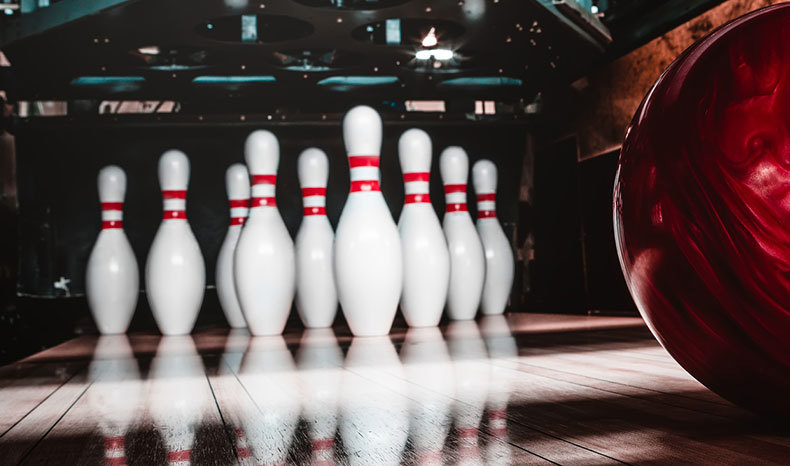If you’ve ever visited a tenpin bowling alley to indulge in a game of bowling for a birthday, work party or first date (or any reason, for that matter!), you’ll have an idea of the immense pressure bowling pins have to deal with every day.
Just think about it – people launching heavy bowling balls at them at high speed, which crash into and send them scattering everywhere… It’s a miracle they don’t simply snap halfway through an intense game of tenpin bowling!
So what is it that keeps them intact? The secret lies in what bowling pins are made of and how they’re made.
Wood you believe it
Ask any unsuspecting friend what they think bowling pins are made of, and they will likely mention some incredibly hard and indestructible material, such as metal. Imagine their surprise when you tell them that bowling pins are made of wood! (A piece of bowling trivia that will no doubt come in handy at your next quiz night.)
Obviously, bowling pins must endure high-impact collisions on a regular basis, so an especially tough type of wood is used. This is most often hard rock maple (also known as sugar maple) wood. Hard rock maple measures 1400 on the Janka Hardness Index (as opposed to 700 for soft maple wood) and is a heavier and more straight-grained wood than softer maples.
The durability of this wood, coupled with its manufacturing versatility (it’s also used for making pianos!), makes it the perfect material for making bowling pins.
Getting in shape
You may be wondering how exactly a block of hard wood is transformed into the elegant curves of a pin. In the early days of tenpin bowling, bowling pins were made from a single block of hard rock maple. But as the game advanced, so did the manufacturing techniques.
These days, the manufacturing process of bowling pins begins with smaller blocks of wood that are layered together to form sub-assemblies, which are glued and clamped into a pressurised mould to build it into the next larger assembly – this technique makes the eventual finished bowling pin more durable than simply using a solid block of wood.
The rough composite parts of the pin are then cut, glued and planed until they fit together perfectly, producing the smooth contours you see on the finished product. The finalised piece is then run through a machine that weighs it, calculates its density, and determines the amount of wood that needs to be removed to bring the final pin within specifications.
Once the bowling pin ticks all the right boxes, a coating is applied to the pin using the process of high-pressure injection moulding. This coating is usually a hard plastic sheath, which is laminated and lacquered to give it that shine.
At the end of this process, the surface of the pin is sanded to remove any excess material, any decorative markings or stamps are silk-screened onto its surface, and a final protective gloss is sprayed onto the pin.
Sound idea
You might not think it, but the sound of bowling pins falling is an important part of the ambience of a bowling alley and the experience of, say, bowling your first strike. That’s another reason why wood is used rather than steel: that distinctive sound of pins crashing comes from the wood used to make the bowling pins. So far, no other material has been able to match that satisfying sound, crucial to the aura surrounding a good game of tenpin bowling!
Are you ready to test out the strength of the pins at your local bowling alley?







